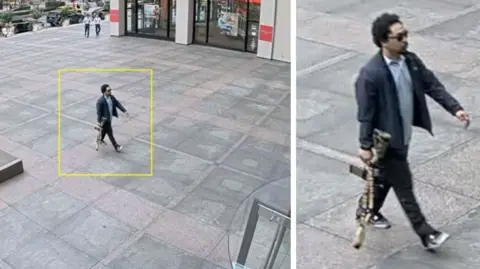### Targeted Shooting in New York: Gunman Mistakes Office Location
A tragic incident unfolded in New York City, where a gunman opened fire in a building associated with the National Football League (NFL), resulting in the deaths of four people. The shooter, identified as 27-year-old Shane Tamura from Las Vegas, left behind a concerning note that implicated the NFL for his mental distress, citing chronic traumatic encephalopathy (CTE), a brain disease linked to repeated head injuries commonly associated with contact sports. This information was disclosed by Mayor Eric Adams during a press conference held shortly after the incident.
### Details of the Attack
The shooting took place on a Monday evening, when Tamura gained entry into the skyscraper housing the NFL offices but, reportedly, ended up on the wrong floor after taking an incorrect elevator. According to reports, he was armed when he entered and quickly began to fire, tragically killing New York City police officer Didarul Islam as well as three other victims, whose identities have yet to be officially released. Moreover, an NFL employee suffered serious injuries during the chaos. Adams confirmed that Tamura took his own life after the attack.
### The Motivation Behind the Shooting
Investigators revealed that Tamura had a note on his person, in which he expressed grievances against the NFL, claiming that the organization was responsible for his mental condition due to CTE. The mayor noted that Tamura had been a football player in his youth but had never played professionally in the NFL. This tragic case raises further concerns about mental health issues and the repercussions of head injuries sustained in sports, particularly football.
### Community Reaction and Discussion
The shock from the incident reverberated through New York City, with citizens, officials, and sports communities grappling with the outcome of such violence. NFL Commissioner Roger Goodell made a statement expressing condolences to the victims and their families, while underscoring the league’s commitment to addressing any issues related to player safety and health.
In light of incidents like this, discussions surrounding gun control, mental health, and the psychological impacts of football continue to intensify. This specific event has sparked a dialogue about the responsibility of sports organizations in monitoring and protecting the well-being of athletes, particularly concerning the long-term effects of brain injuries sustained on the field.
### The Broader Implications
This shooting is a stark reminder of the ongoing problem of gun violence in the United States, which continues to escalate in various forms, including mass shootings and domestic violence incidents. As the investigation progresses, it is likely that further details will emerge, shedding light on how such events could potentially be mitigated in the future.
### Ongoing Developments
As this story is unfolding, the attention of the media and community leaders remains focused on the implications of gun violence and mental health awareness. The New York City Police Department is conducting a thorough investigation, and updates are expected to follow. The mayor’s office, along with mental health advocates, will likely push for a reassessment of mental health services and gun control measures in response to this tragic event.
The situation is fluid, with more information anticipated as investigations continue. Details regarding the other victims, along with Tamura’s background and mental state, are likely to surface, further complicating the narrative around this tragic event. Individuals seeking to stay informed regarding updates can utilize news outlets and social media platforms for breaking news alerts.
As New York copes with the aftermath of this horrific incident, the complexities surrounding mental health, sports culture, and gun legislation are brought into sharp focus, hopefully paving the way for meaningful discussions and future reform.












